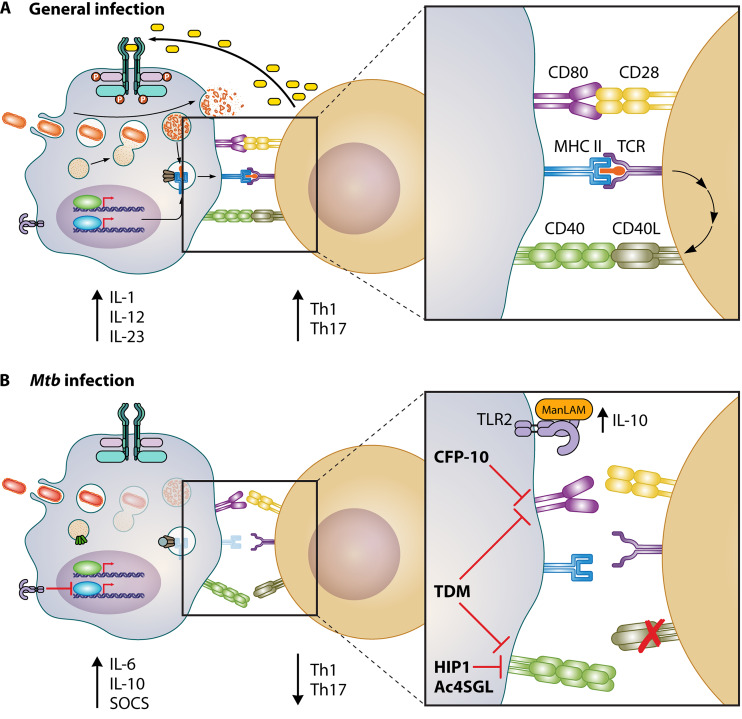FIG 2.
M. tuberculosis uses multiple effectors to manipulate costimulatory molecule activity and CD4+ T cell polarization. (A) Schematic of the general response of costimulatory molecules in APCs during infection with an intracellular pathogen. APCs induce CD80/86:CD28 and/or CD40:CD40L binding, resulting in the proliferation of CD4+ T cells and Th-1/Th-17 polarizing cytokine secretion from the APC. (B) Schematic of M. tuberculosis-mediated evasion of costimulatory. Infection of APCs with M. tuberculosis results in inhibition of costimulatory molecule expression. ManLAM from M. tuberculosis interacts with TLR2 to induce IL-10 secretion, repressing Th1 polarization. TDM inhibits the induction of CD80/86 and CD40, while Hip1 and Ac4SGL block robust activation of CD40. These virulence traits change the overall cytokine response and prevent the protective capacity of M. tuberculosis-specific T cells from eradicating the infection.

